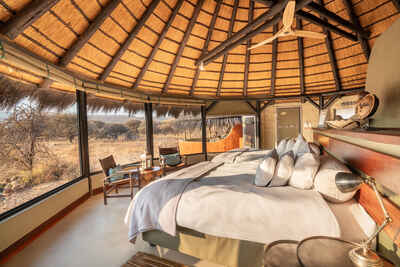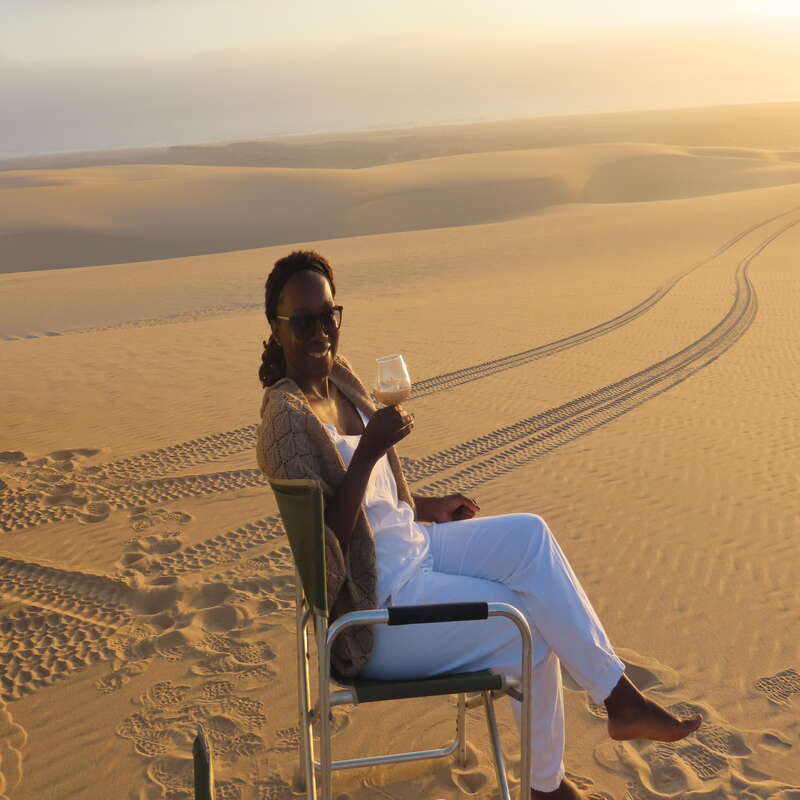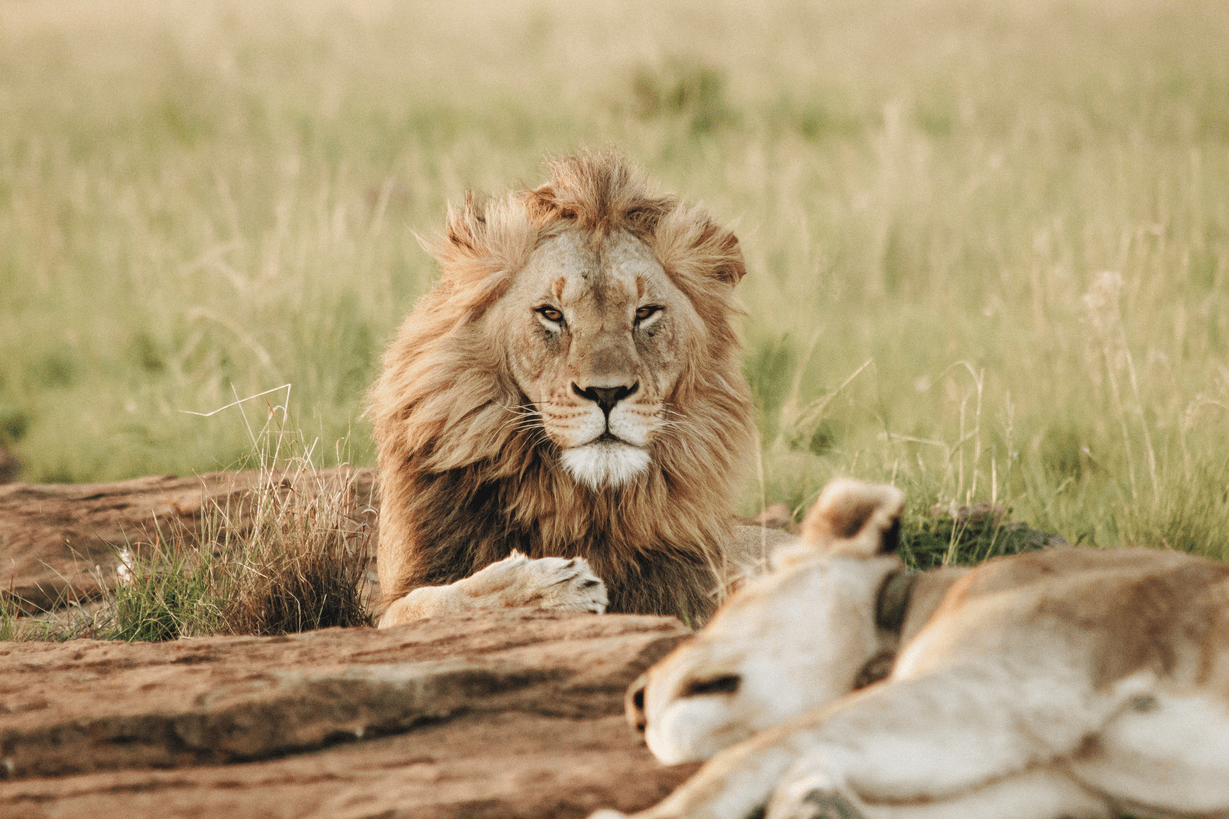About Okonjima Bush Camp
With its thatched chalets and stylish curves, Okonjima Bush Camp is a subtly luxurious setting for seeking out leopards.
And for many visitors, it's the leopards that have pride of place on the 220km² private Okonjima Reserve. Tracked by knowledgeable guides from 4WD vehicles, they present the visitor with superb photographic opportunities.
While leopards may top the bill, the diverse wealth of wildlife that inhabits the protected plains and craggy rocks of the reserve deserves serious attention too, as does the conservation work of the AfriCat Foundation, which is committed to protecting these threatened species.
Back in camp, smaller animals, from antelope to warthog, are attracted to the waterhole in front of each chalet. Watch from the comfort of your bed, or from the softly draped daybeds that furnish your private rondavel. Scatter birdseed here, too, and await the colourful array of birds that materialise from the surrounding bush.
By day or after dark, wander over to the hub of the camp, perhaps for a swim or to relax in the shade by the pool; perhaps for a drink at the bar before a delicious three-course dinner served at solidly carved tables.
And to round off your day, settle down by the fire to swap stories beneath the glittering stars of the Namibian night sky.
Our view
Okonjima Bush Camp's small size, as well as the generally high standards of care, attentive service and delicious food, create a very comfortable and exclusive-feeling environment. Over many visits, the camp's knowledgeable guides have also made it highly memorable. We've returned home with a wealth of information about Namibia's carnivores, and some fantastic photographs of leopard in particular.
Accommodation
9 rooms
Children
Best for 16+
Open
All year
Activities

4WD Safari

Birdwatching

Cultural excursion

Mountain biking

Night drive

Private activities

Self-guided walking
Traveller reviews of Okonjima Bush Camp
273 real, un-edited reviews from Expert Africa's travellers.
Arrived 2 Jan 2025, 2 nights
"Okonjima Bush Camp review"
Overall rating: Excellent
Arrived 28 Dec 2024, 2 nights
"Okonjima Bush Camp review"
Overall rating: Excellent
Arrived 4 Nov 2024, 2 nights
"Okonjima Bush Camp review"
Overall rating: Excellent
Arrived 25 Oct 2024, 2 nights
"Okonjima Bush Camp review"
Overall rating: Good
Arrived 20 Oct 2024, 1 nights
"Okonjima Plains Camp review"
Overall rating: Excellent
Arrived 21 Oct 2024, 1 nights
"Okonjima Bush Camp review"
Overall rating: Excellent
Arrived 7 Oct 2024, 2 nights
"Okonjima Bush Camp review"
Overall rating: Excellent
Arrived 10 Oct 2024, 1 nights
"Okonjima Bush Camp review"
Overall rating: Excellent
Arrived 25 Sep 2024, 2 nights
"Okonjima Bush Camp review"
Overall rating: Excellent
Arrived 13 Oct 2024, 2 nights
"Okonjima Bush Camp review"
Overall rating: Excellent
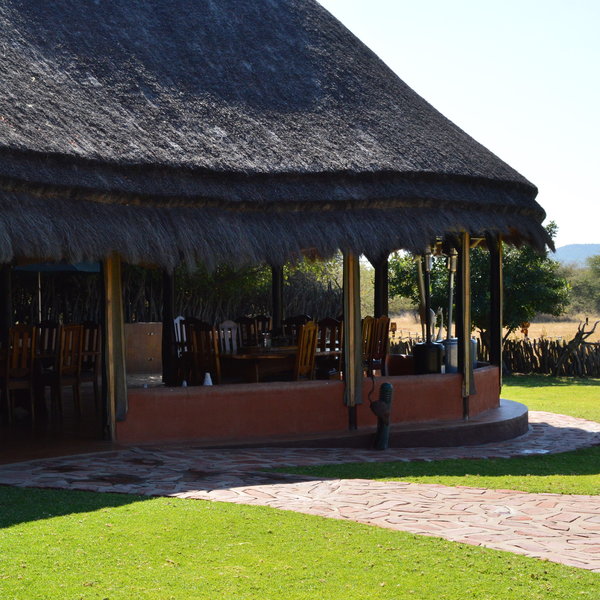
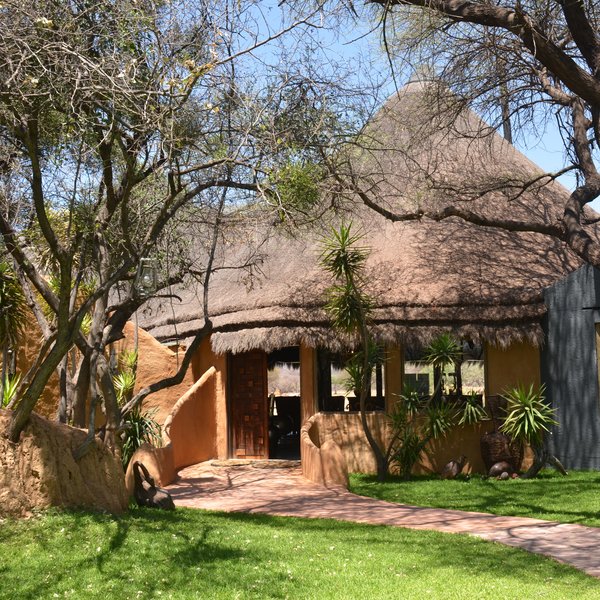
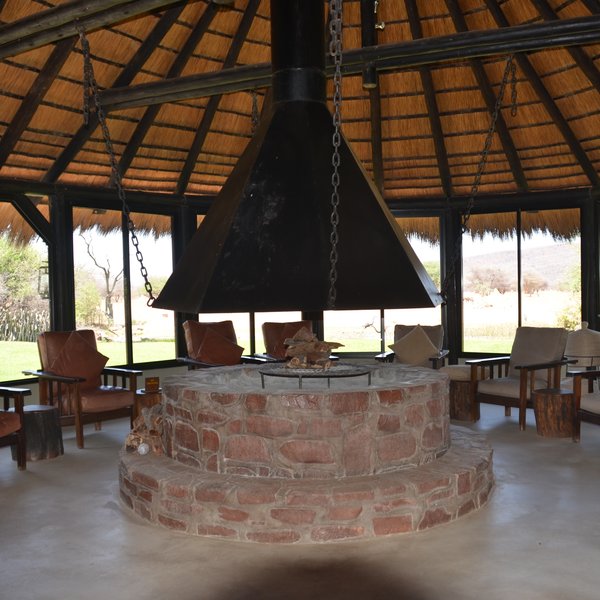
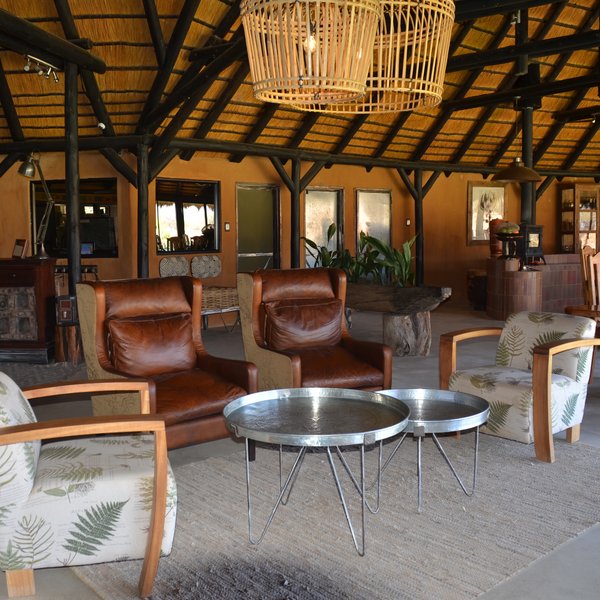
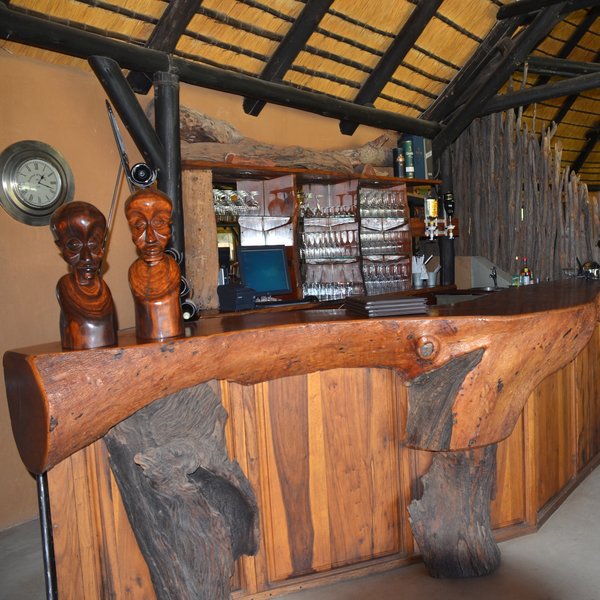
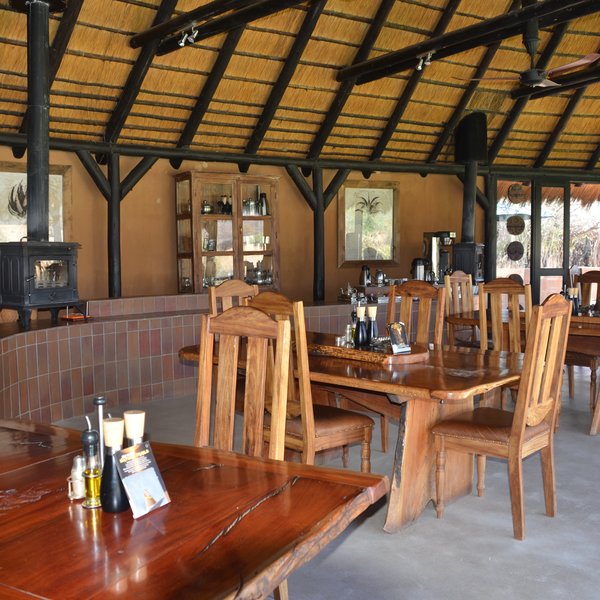
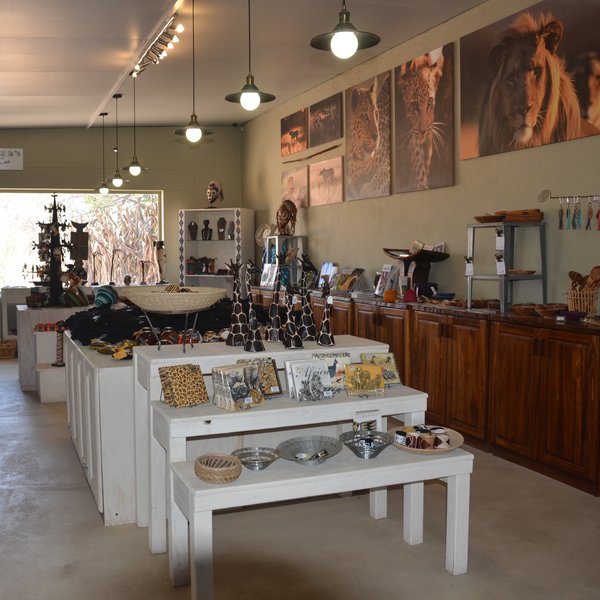
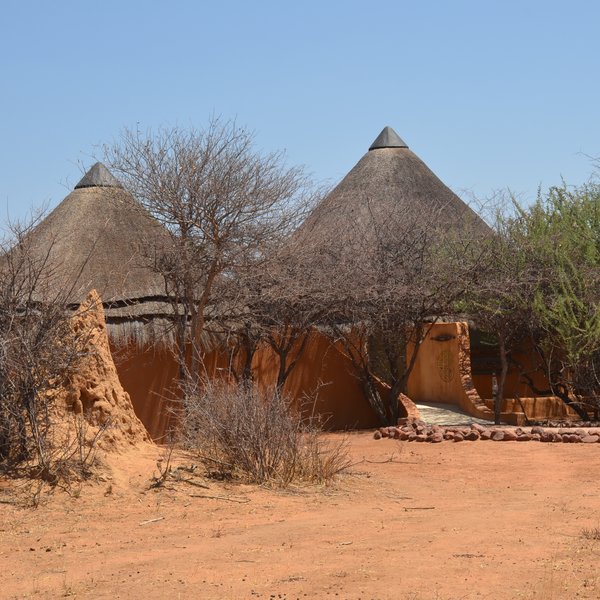
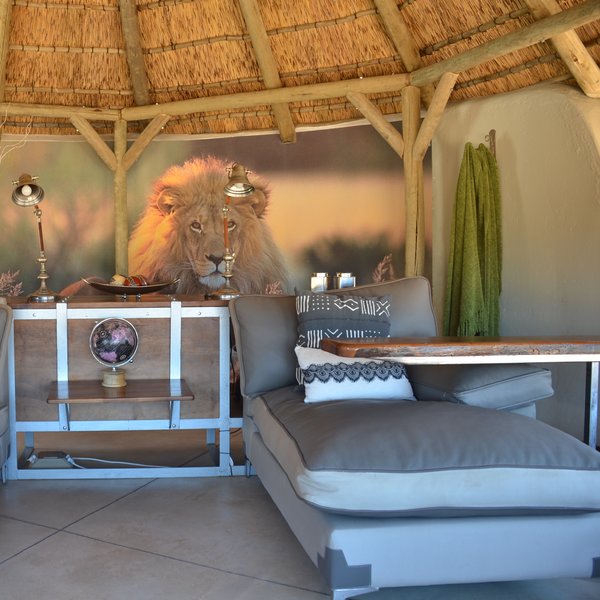
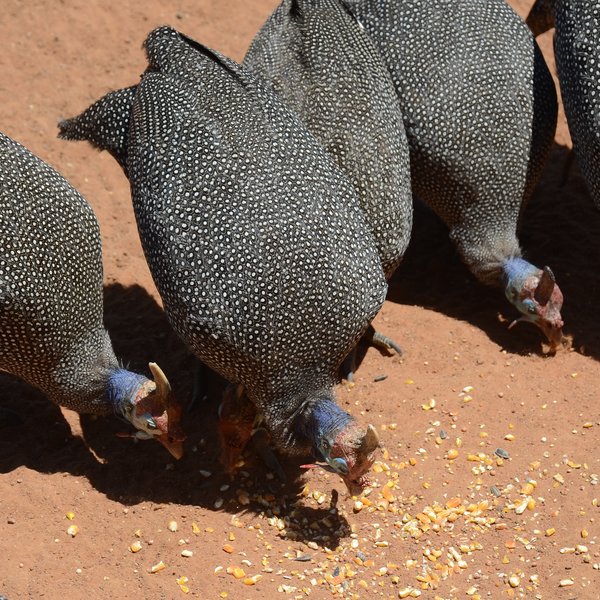
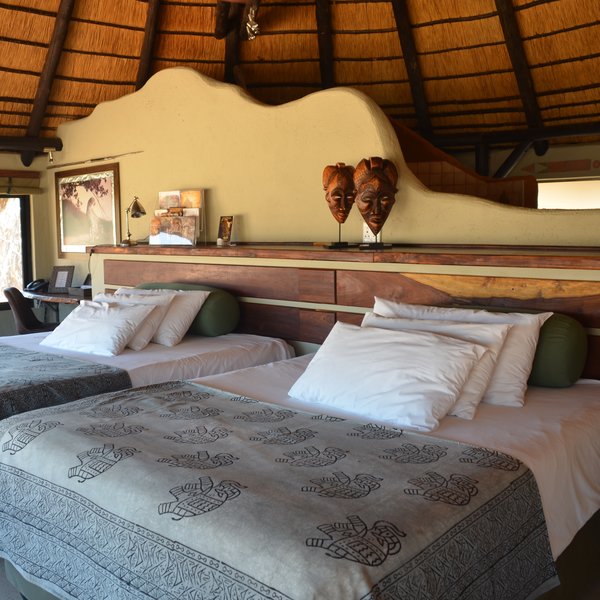
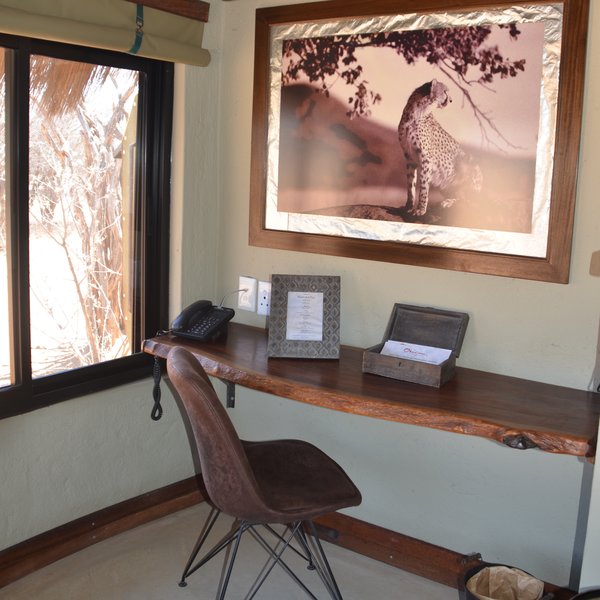
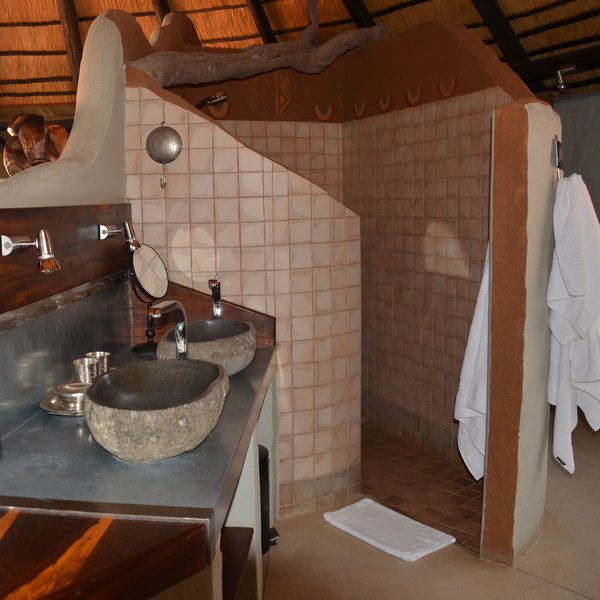
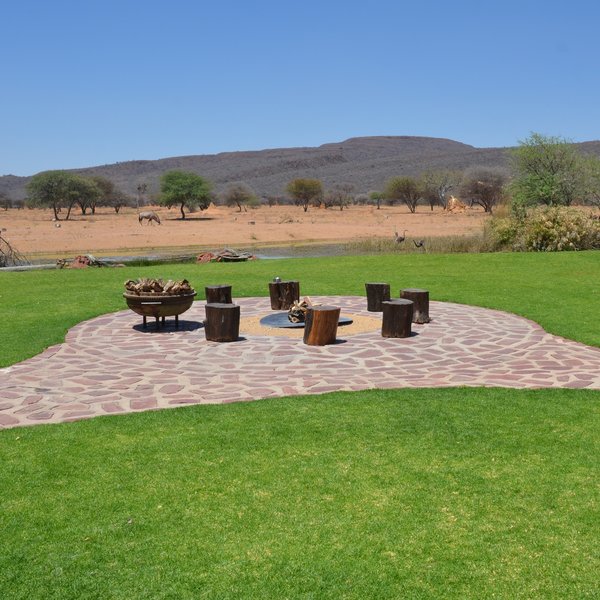
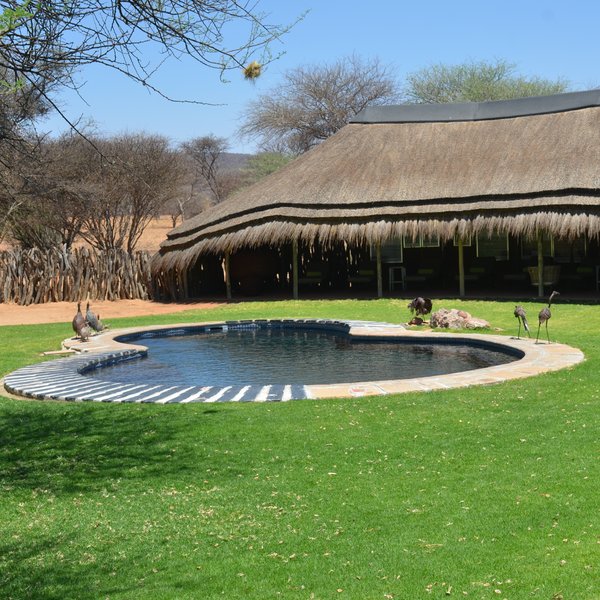
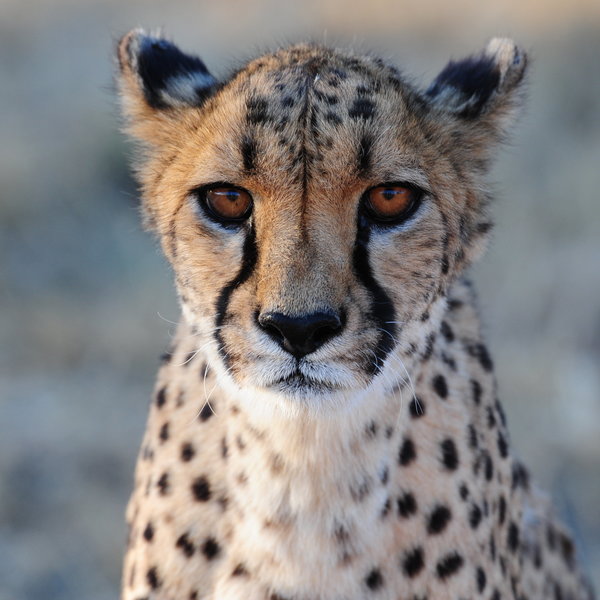
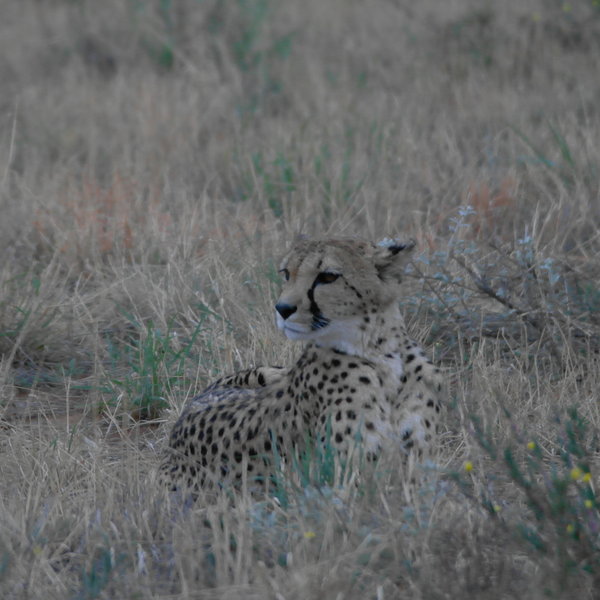
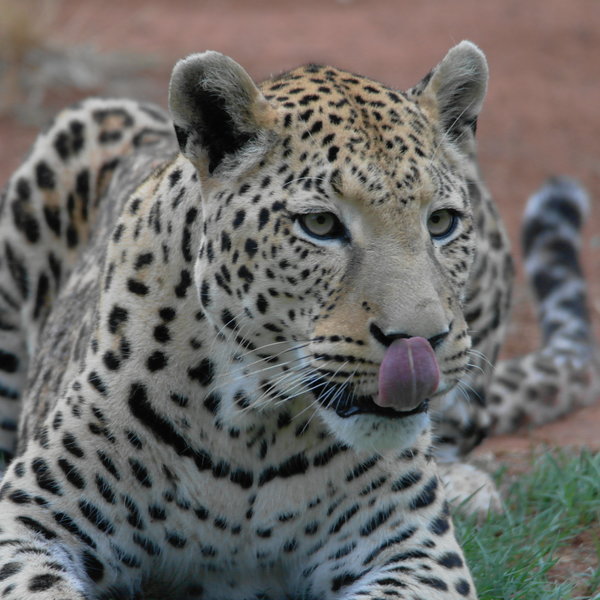
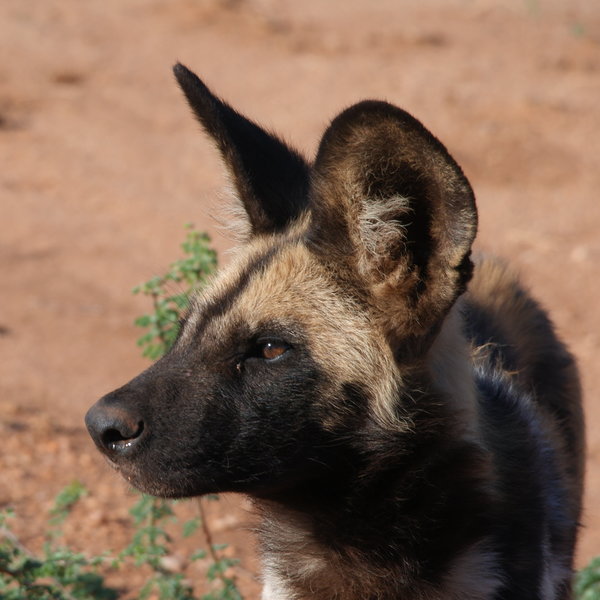
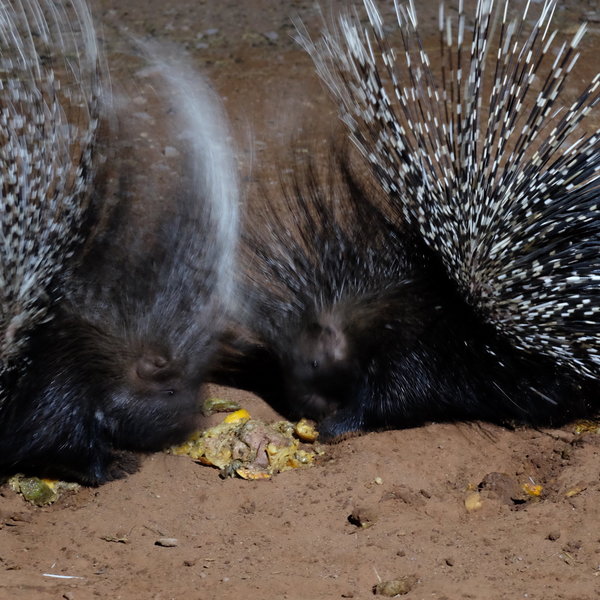
Expert Africa's gallery
When we travel we take lots of photos ourselves to give you a real and un-edited view of the safaris. See our 34 pictures and 1 videos of Okonjima Bush Camp to get the candid view.
View gallerySafaris visiting Okonjima Bush Camp
Just ideas, we'll always tailor-make a trip for you
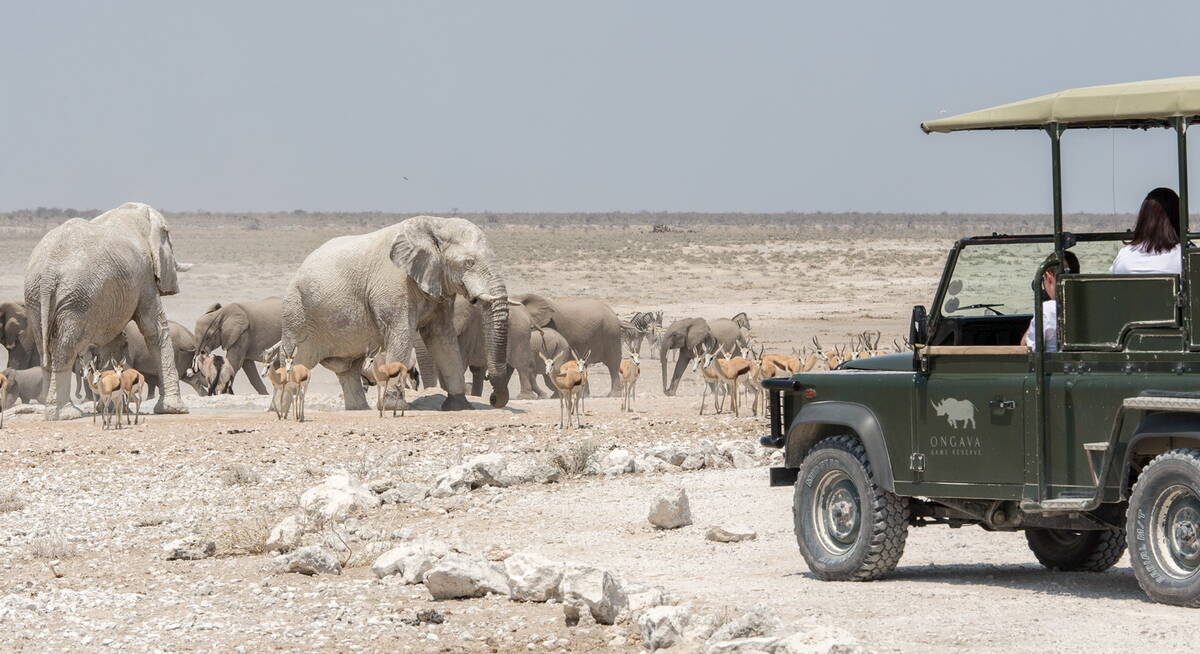
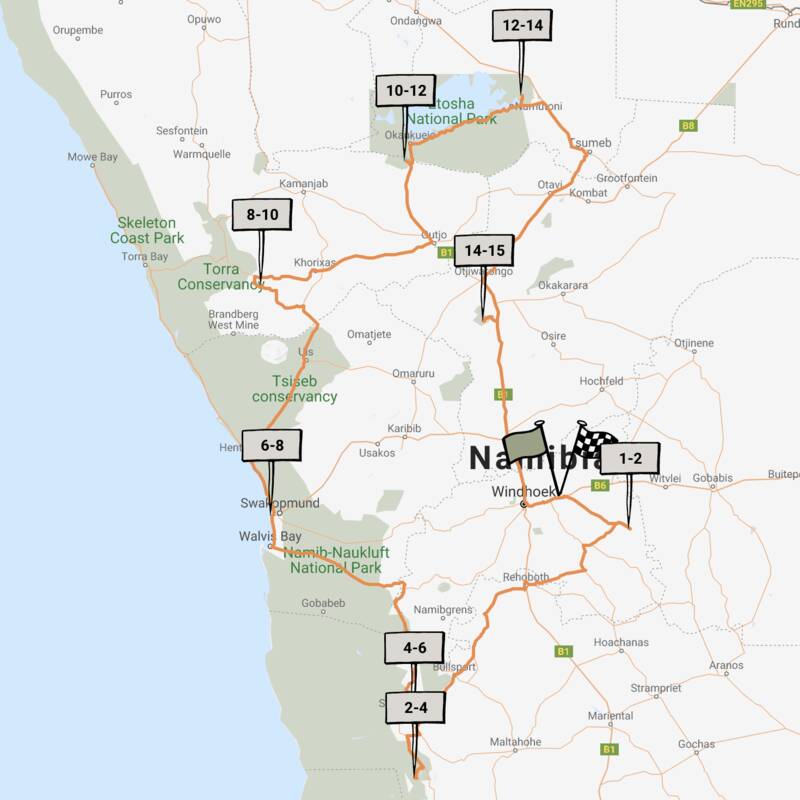
Brown Hyena Self-drive
14 days • 8 locations • 1 country
WINDHOEK AIRPORT TO WINDHOEK AIRPORT
The perfect trip for those who want to mix the adventure and freedom of a self-drive with some of our favourite luxury camps in Namibia and a great mix of activities.
Visiting Okonjima, Namib-Naukluft and 5 other areas
US$9,240 - US$10,190 per person
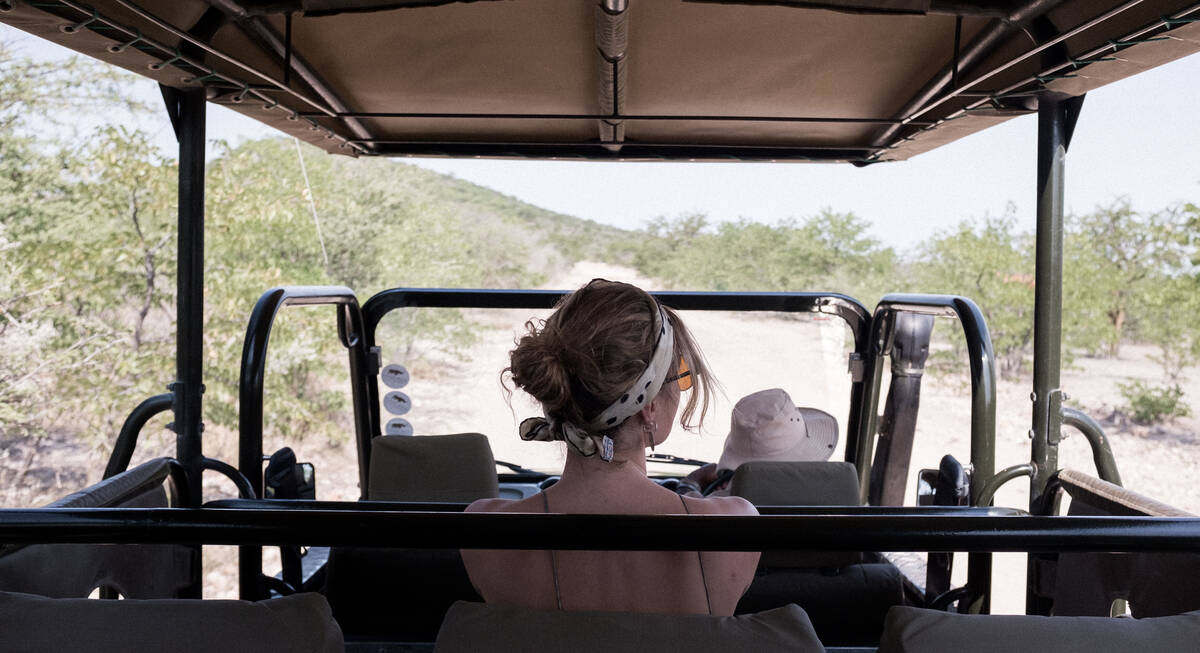
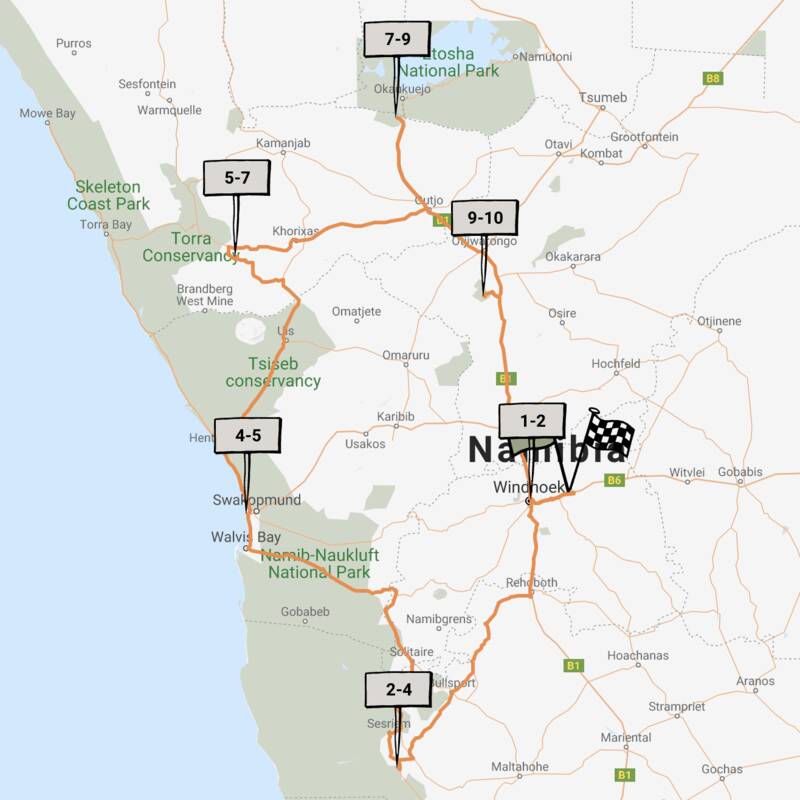
Rock Agama Self-drive Safari
9 days • 6 locations • 1 country
WINDHOEK AIRPORT TO WINDHOEK AIRPORT
Big on experience and light on time, this self-drive trip packs in Namibia’s highlights while staying in a selection of luxury camps and lodges for an unforgettable 10 days.
Visiting Okonjima, NamibRand and 4 other areas
US$9,900 - US$14,740 per person
Okonjima Bush Camp: Our full report
The rolling hills and grassy plains of the Okonjima Nature Reserve are home to Okonjima Bush Camp.
The 220km² reserve, just south of Otjiwarongo, is also the base for the AfriCat Foundation, a non-profit organisation set up to conserve and protect Namibia's wildlife – with a focus on carnivores. From this small camp, guests are invited to learn about human-wildlife conflict and to get up close to some of the country’s endangered species, especially the elusive leopard.
Bush Camp, along with its sister camps on the same large reserve – the bigger Okonjima Plains Camp, and, the two-bedroom Bush Suite, is located within a 20km² fenced “wilderness” area of the Okonjima Reserve. While there are antelope, warthog and giraffe within this fenced area, most larger predators have been moved elsewhere in the reserve, so it is deemed safe for guests to walk around the lodge unescorted. The only property located in the main reserve is the luxurious, four-bedroom, private Okonjima Villa, which overlooks a large waterhole.
Bush CaBush Camp, along with its sister camps on the same large reserve – the bigger Okonjima Plains Camp, and the two-bedroom Bush Suite, is located within a 20km² fenced “wilderness” area of the Okonjima Reserve. While there are antelope, warthog and giraffe within this fenced area, most larger predators have been moved elsewhere in the reserve, so it is deemed safe for guests to walk around the lodge unescorted. The only property located in the main reserve is the luxurious, four-bedroom, private Okonjima Villa, which overlooks a large waterhole.
Bush Camp has just eight chalets and a honeymoon suite, each constructed of clay. Spaced 80–100m apart, for privacy, the chalets are styled on traditional circular African dwellings, or rondavels, with conical thatched roofs. Large glass windows to the front let in plenty of light and afford terrific 180° views of the grassy plains from your bed.
The rooms, with two queen-size beds, are simply decorated in a warm cream colour, enlivened by carvings and artefacts. A sculpted partition wall separates the bedroom from the en-suite bathroom, which has a shower, twin stone sinks and separate toilet. Each room is also equipped with a ceiling fan, a small safe, a hairdryer, insect repellent and a telephone linked with both reception and the other chalets.
Adjacent to each chalet is a separate open-sided rondavel that serves as a lounge area and is furnished with very comfortable day beds: the perfect shady spot to relax in the heat of the day. Welcome refreshments are close to hand in the form of tea/coffee-making facilities and a jar of delicious freshly baked biscuits; there is also a minibar that is stocked on request. In front of each chalet is a small bird bath/waterhole where smaller antelopes, warthogs, birds and mongooses come to drink. As an additional touch, a jar of birdseed is provided for you to scatter to attract a variety of birds. On one of our visits, we got some great close-up pictures of guinea fowl, waxbills, francolin and hornbills when we tried it!
With similar amenities, but quite different in design, the honeymoon suite is a rectangular room with large sliding-glass doors in front of the bed. It also differs in that there is a fireplace in the lounge, as well as a bathtub and an outdoor shower.
The main area at Okonjima Bush Camp is one of our favourite parts of the camp. A large, curved building, it overlooks a manicured lawn with a pond, and grassy plains beyond. It has three quite distinct areas: the reception and a curio shop; a dining room with beautiful, heavy wooden tables; and a large and very inviting lounge with a fireplace and the bar. There is almost always a member of the team around if you need anything and, on our visits, nothing has seemed too much trouble. Around the side of the building, and slightly raised, is a decent-size swimming pool, with sunloungers and shaded areas to relax out of the sun.
As with its sibling properties at Okonjima, Bush Camp is perhaps best known for its leopard tracking. A stay here of one or – better – two nights will usually give you the chance to track and observe these often elusive big cats at close range. As an added bonus, the cats are used to seeing people so are generally relaxed around the vehicles, providing some excellent photographic opportunities (although note that most of the leopards are collared for research purposes). Although sightings can never be guaranteed, on our last visit in April 2024 we were lucky to spend around an hour and a half watching a female leopard and her young sub-adult cub up a tree, eating a giraffe carcass they had killed the night before.
In addition to leopard tracking, other activities led by the knowledgeable guides at Okonjima include:
- Nature drives: There are over 40 mammal species on the reserve and many more birds. Guests will see many of these while out tracking leopard or other species, but if you stay more than a night or two you can choose to go out without using tracking telemetry and see what you can find.
- Pangolin tracking: This activity has limited availability and is weather dependent. Departing after dark, guests have the opportunity to track tagged ground pangolin, following it at a discreet distance on foot. Good footwear and a flashlight are required. Pangolins spend much of their time underground so even with tracked individuals sightings are not guaranteed.
- Rhino tracking: Okonjima is home to a small population of southern white rhino that are constantly monitored by the reserve's anti-poaching team. On this activity, guests can often approach the rhino on foot.
- AfriCat Carnivore Care Centre: Here guests may visit some of the reserve's welfare animals – individuals that cannot be released into the wild. These animals help with education and provide an insight into the work of the AfriCat Foundation. After visiting the welfare animals you'll head to the information centre to learn about the history of Okonjima and their ongoing work.
- Night drive: As many of Namibia's animals are exclusively nocturnal, this activity offers the chance to head out into the bush after dinner to try and find species that you'd usually miss during the day.
- Night hide: This activity is exclusive to Bush Camp guests. Head out to the hide after dark to see what wildlife passes by.
- Self-guided walking trails: For those who'd like a break from bumping around in a vehicle and would like to stretch their legs, there are several well-marked walking trails within the fenced wilderness area. These offer the chance to look at the smaller things and to spot some of the reserve's many bird species.
Activities
4WD Safari
Birdwatching
Cultural excursion
Mountain biking
Night drive
Private activities
Self-guided walking
Families & children
- Attitude towards children
- Okonjima Bush Camp welcomes well-behaved children over the age of 12 years.
- Property’s age restrictions
- Bush Camp has a minimum age limit of 12 years. Activities that involve walking in the reserve are only available to those over 14 years old.
- Special activities & services
- None
- Equipment
- None
- Generally recommended for children
- Although we think that Bush Camp would be acceptable for children over the age of 12, they might feel more at ease at. Plains Camp, which is much more geared towards families. They are also much more likely to meet other children at Plains Camp.
- Notes
- Children must be under the constant supervision of their parents at all times. The pool is not fenced and despite the fence around what Okonjima term as the “safe zone” for the camps on the reserve, there is some wildlife (warthogs, antelope, zebra, giraffe etc) within the area.
Food & drink
- Usual board basis
- Full Board & Activities
- Food quality
- In our experience, Okonjoma Bush Camp has always put thought and effort into its food. We were pleased to see this was still the case when we visited in April 2024, when the food here was some of the best on our trip.
A light breakfast is on offer for those going out on a morning activity. It's an early start, so it's normally a small selection of cereals, muffins, fruit, tea and coffee. On your return, a much larger breakfast buffet, consists of the usual selection of bread, toast, muffins, cereals, yoghurt, fruit, juice, cold meat and cheeses, as well as a hot breakfast with bacon and eggs cooked to order.
On our most recent one-night stay we didn't have time for lunch, but this is usually quite informal and maybe a salad or light meal.
Afternoon tea is served before the afternoon activity departs; on our visit, this included vegetable pastries and a delicious carrot cake.
Dinner is a three-course plated meal. We enjoyed butternut, courgette and feta fritters with feta cream, pumpkin seed pesto and butternut crisps to start. For main we had a choice of chicken or beef kebab served with pumpkin and rosemary mielie pap, flash-fried vegetables, a mushroom jus and beetroot marmalade; the beef was perfectly done. Finally, dessert was a superb date and toffee pudding with caramelised banana, toffee sauce and vanilla ice cream - Dining style
- Mixture of group dining and individual tables
- Dining locations
- Indoor and Outdoor Dining
- Further dining info, including room service
- No
- Drinks included
- Bottled water, soft drinks, local beers and spirits and a limited selection of house wines are included. Champagne and imported wines and spirits will cost extra.
Our travellers’ wildlife sightings from Okonjima Bush Camp
Since mid-2018, many of our travellers who stayed at Okonjima Bush Camp have kindly recorded their wildlife sightings and shared them with us. The results are below. Click an animal to see more, and here to see more on our methodology.

98% success

96% success

95% success

92% success

68% success

67% success

52% success

51% success

44% success

27% success

10% success

6% success
Getting there
- Location
- Okonjima Nature Reserve, Namibia
- Ideal length of stay
- At least two nights are best to enjoy the reserve’s wildlife. However, if you are limited for time, on a one-night stay you should be able to get an idea of what the AfriCat Foundation does, and with luck see some cats.
- Directions
- Okonjima Bush Camp lies some 23km west of the B1, about 48km south of Otjiwarongo.
- Accessible by
- Self-drive or Fly-and-Transfer
Special interests
- Honeymoons
- Each of the large, luxuriously appointed chalets at Okonjima Bush Camp comes with its own separate day room: perfect for a Namibian honeymoon. For something extra special, consider the larger honeymoon suite, with its own fireplace, bathtub and outdoor shower.
- See ideas for Honeymoons in Namibia
- Birdwatching safaris
- For birdwatching in Namibia, the guided and self-guided walks around Okonjima can be excellent. The lodge itself also has a variety of watering points, bird-baths, dams and lakes that help to attract the local birdlife.
- See ideas for Birdwatching safaris in Namibia
- Photography safaris
- For close-up shots of predators, especially leopard, Okonjima deserves to be high on the list for photographers in Namibia. Allow at least two days to maximise your photographic chances, and do be aware that most of the big cats are collared
- See ideas for Photography safaris in Namibia
- Wildlife safaris
- Visitors at Okonjima can usually have the chance to view big cats at much closer quarters than is possible in most national parks. With most of the animals habituated to humans, this is a good place to end a wildlife safari in Namibia.
- See ideas for Wildlife safaris in Namibia
- Luxury safaris
- Okonjima Bush Camp's interior encompasses lovely African artefacts and carvings, while the en-suite bathrooms feature stylish stone washbasins and large walk-in showers. Highly attentive service and delicious food enhance its reputation as a luxurious Namibian safari lodge.
- See ideas for Luxury safaris in Namibia
Sustainability
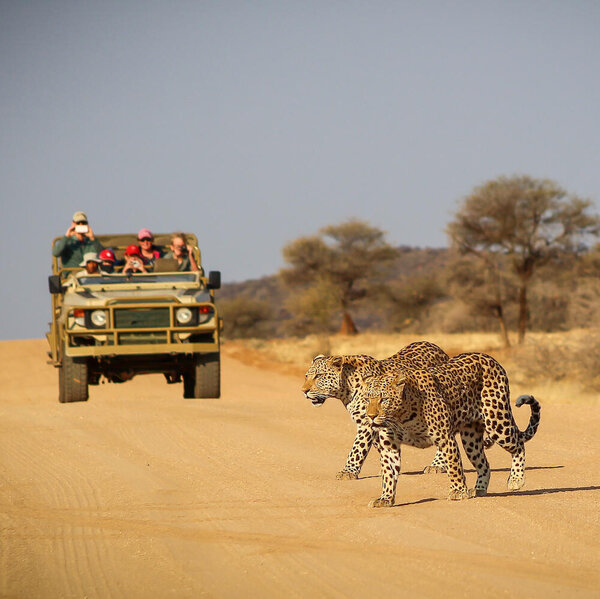
Conservation through education
At the heart of the Okonjima Reserve is the AfriCat Foundation, whose tagline today is “conservation through education”. Since its inception in the early 1990s, AfriCat’s primary focus has been to protect predator populations.
In order to achieve this, work starts with studying animal behaviour, and is currently looking at brown hyena and leopard populations to understand how their behaviour changes and evolves over time. From here they go on to develop mitigation strategies for human-wildlife conflict and then, by promoting these to Namibia’s farmers, can start to protect the animals themselves.
See more great sustainability projects in Namibia
Communications
- Power supply notes
- There is a back-up generator in case the mains power fails. Each chalet has plug points, as well as a hairdryer, electric kettle and bar fridge.
- Communications
- There is cellphone reception in the rooms and in the main area. There are normally telephones in each of the rooms, with internal lines only. WiFi is available in each chalet as well as the main area.
- TV & radio
- None
- Water supply
- Borehole
- Water supply notes
- All rooms have showers and hand basins that are plumbed in, with flushing toilets. The honeymoon suite has a plumbed-in bathtub.
Health & safety
- Malarial protection recommended
- Yes
- Medical care
- The nearest doctor is in Otjiwarongo, about 40 minutes' drive from Okonjima. In a medical emergency, the camp can arrange for travellers to be flown to Windhoek.
- Dangerous animals
- Moderate Risk
- Security measures
- The whole reserve is fenced and there are guards at the main entrance gate.
- Fire safety
- There are fire extinguishers in each room and in the central areas.
Useful info
- Disabled access
- On Request
- Laundry facilities
- A full laundry service is included. Weather permitting, laundry collected in the morning will be returned the same day.
- Money
- Each room has a small safe for storing valuables. There are no currency-exchange facilities available.
- Accepted payment on location
- The camp accepts Visa or Mastercard credit and debit cards. Payments can also be made in cash with Namibian dollars and South African rand.
Plan and book your trip with Expert Africa
All of our trips are tailor-made, so we'll always adapt them to suit you. Talk to an Expert and let us plan and arrange your perfect trip.

Talk to an Expert
Call or email us now! We’ll match you with the Specialist in our team who is best suited to help you. Then together we can start planning your trip.

Set up your itinerary
Based on our experience and your ideas, your specialist will create a detailed, costed itinerary. We’ll refine it together, until we have a trip that you’re perfectly happy with.

Prepare for your trip
The same Specialist will make the seamless arrangements for your trip, send you detailed travel documents, and be available to answer any questions before you depart.

Travel with peace of mind
After you set off, you’ll be cared for by our partners in Africa, most of whom have worked with Expert Africa for decades. And if you ever need us urgently, we’re available 24/7.

When you return
We love to learn about your trip, and so will always be grateful if you’ve the time to give feedback to your Specialist when you return.
Okonjima Bush Camp's location
Look closer at the environment and surroundings of Okonjima Bush Camp.
Other lodges in Okonjima Nature Reserve
Alternative places to stay in this same area.
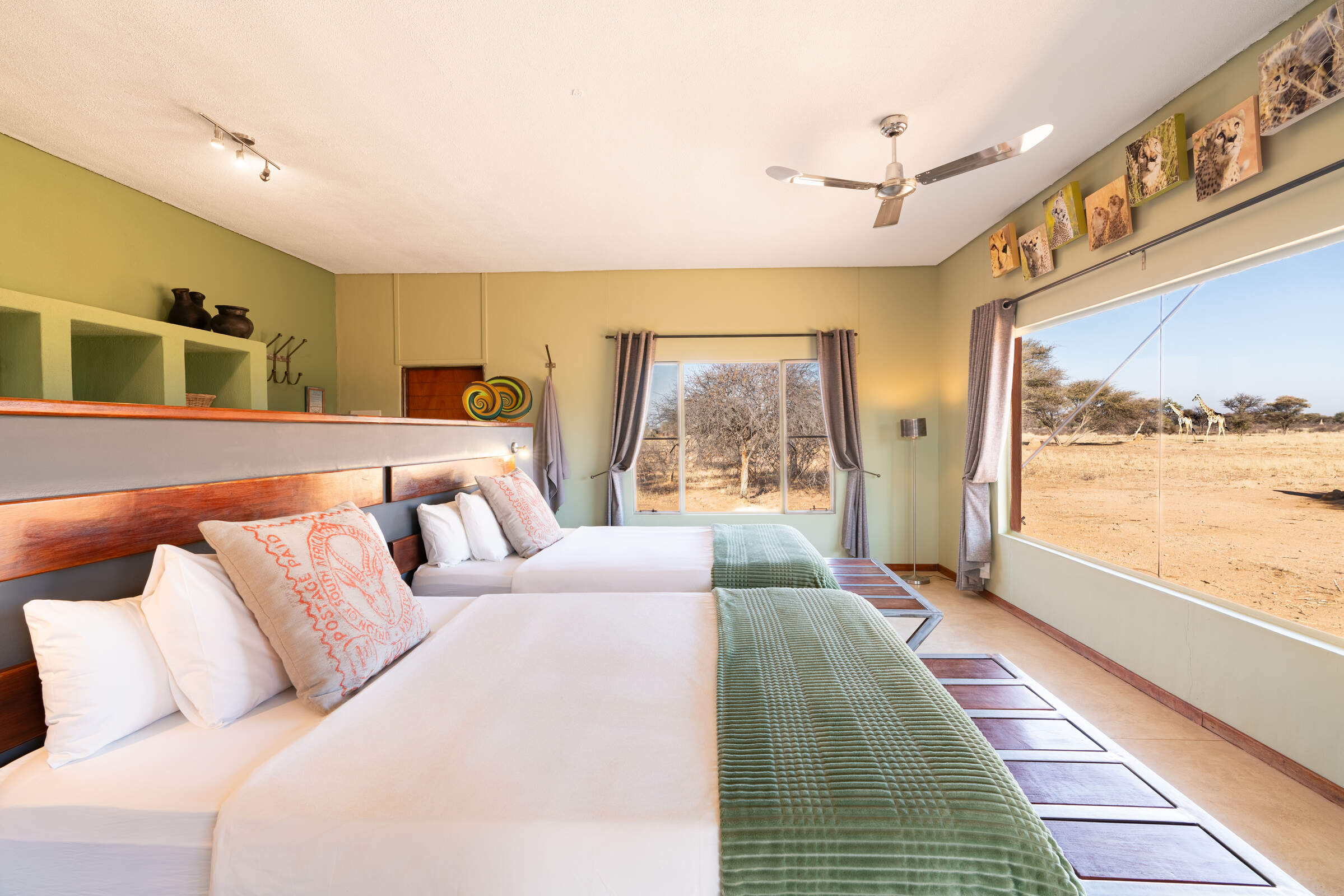
Okonjima Plains Camp
Plains Camp is the most economical option on the Okonjima Reserve, where big cats can often be seen at close quarters, with great photographic opportunities.
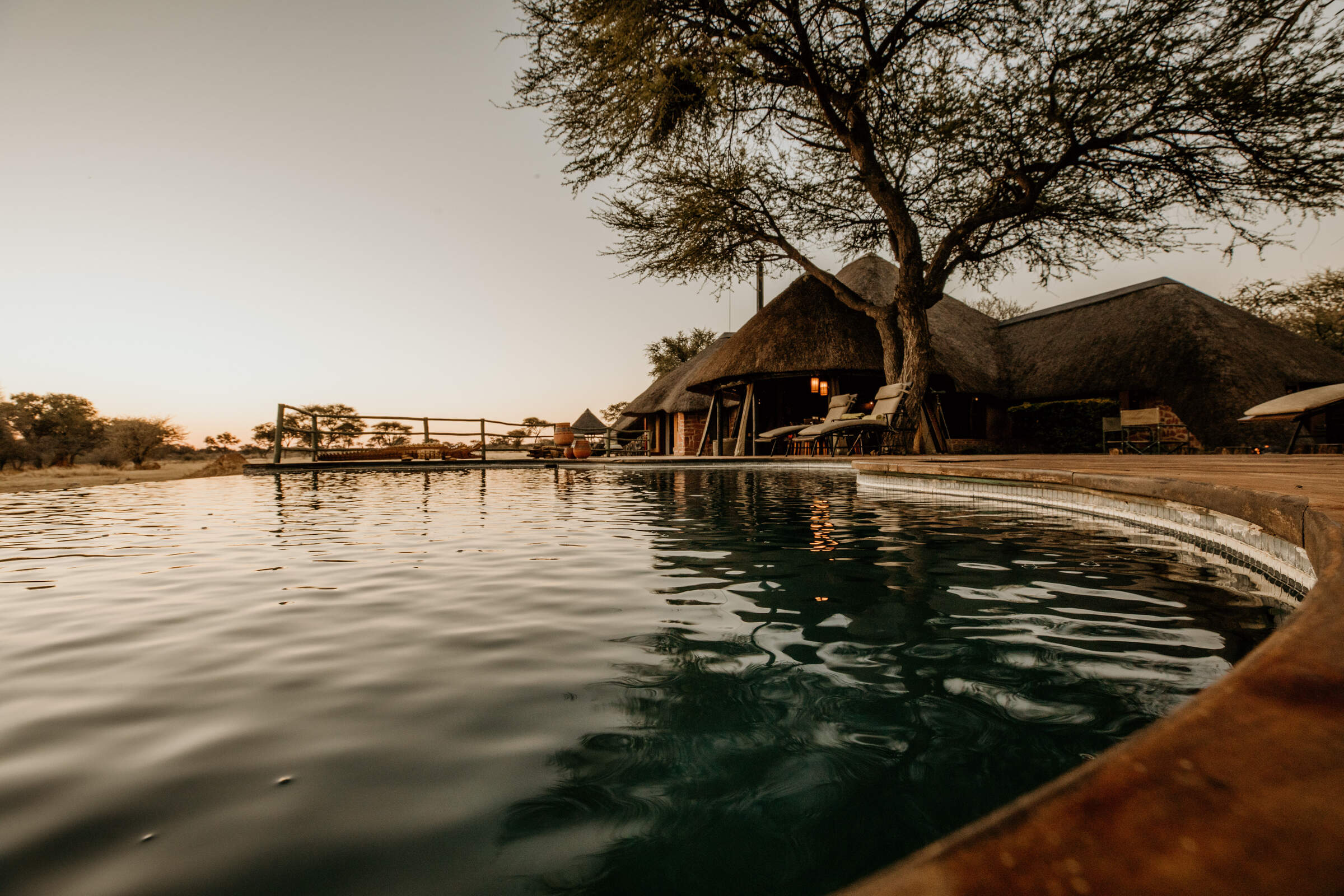
Okonjima Villa
Okonjima Villa is the most exclusive place to stay on Okonjima, offering luxury, privacy, flexibility and fantastic wildlife-watching opportunities.
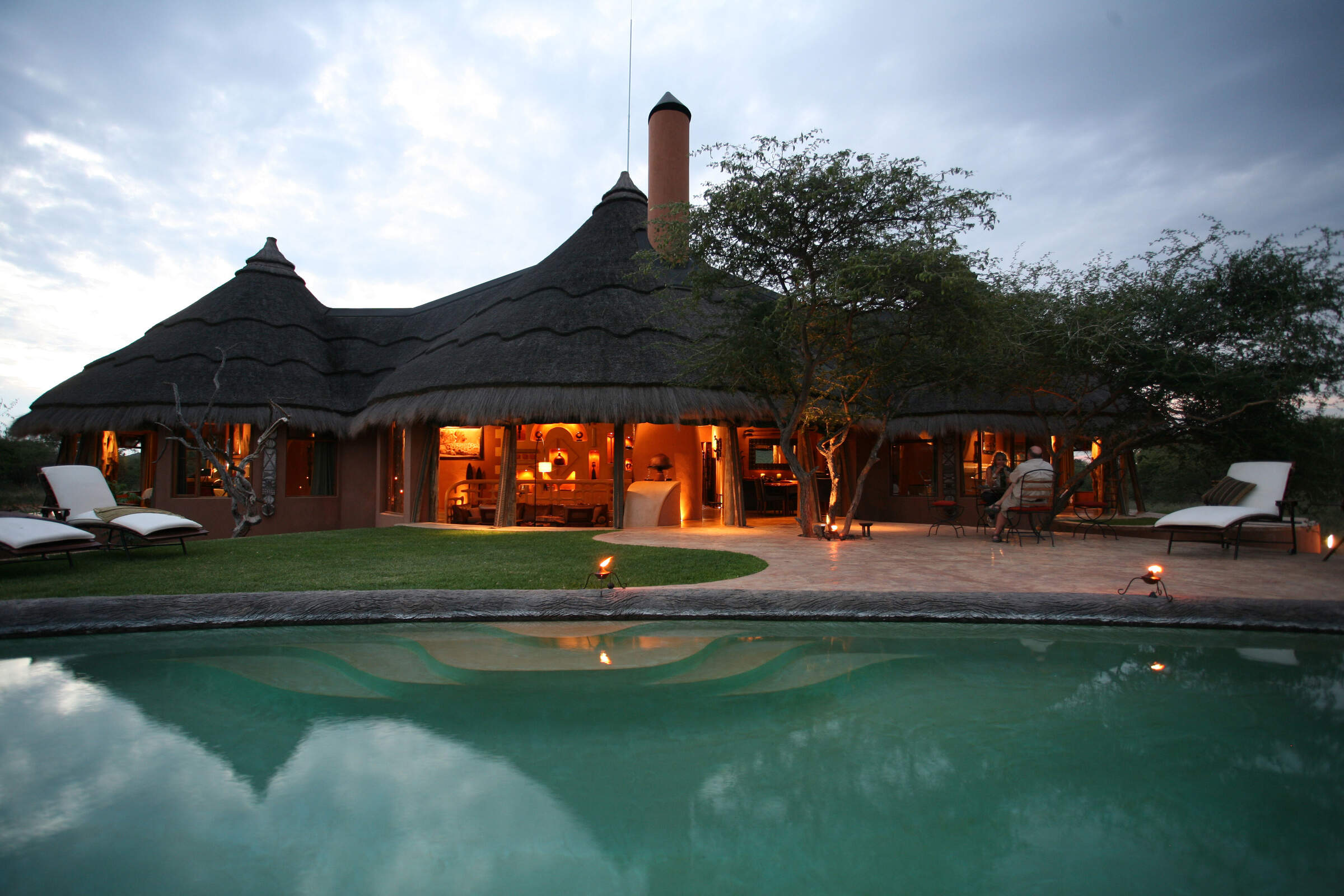
Okonjima Bush Suite
Okonjima Bush Suite is an exclusive, luxurious two-bedroom retreat with a private guide and chef, offering some great photo opportunities when tracking predators.
When to go to Okonjima Nature Reserve
Our month by month guide: What it's like to visit Okonjima Bush Camp in Okonjima Nature Reserve
Jan
Feb
Mar
Apr
May
Jun
Jul
Aug
Sep
Oct
Nov
Dec
Okonjima Nature Reserve in January
Okonjima Nature Reserve experiences its rainy season in January. The reserve's landscape transforms, with lush vegetation sprouting across the 220km2 area. This greening attracts diverse wildlife, including the reserve's famous leopards and cheetahs.
The AfriCat Foundation's conservation efforts are in full swing, with researchers monitoring how the increased rainfall affects predator behaviour. Visitors can participate in tracking activities, though the thicker vegetation can make sightings more challenging. Guided bush walks provide insights into the reserve's flora, now in bloom. Night drives reveal nocturnal creatures taking advantage of the cooler evenings.
Birdwatchers will enjoy the numerous migrant species present during this time.
- Variable weather, occasional thunderstorms
- Wildlife dispersed, harder to spot
- Birdlife at its most spectacular
- Low tourist numbers, favourable rates
- AfriCat Foundation tours less crowded
Our view
This is not a great time to visit
Weather in January
Okonjima Nature Reserve in February
February at Okonjima Nature Reserve sees continued rainfall, maintaining the lush landscape.
The AfriCat Foundation's research projects are focussed on how predators adapt to the wet conditions. Visitors can join leopard tracking expeditions, though dense vegetation may make sightings more challenging. The reserve's waterholes become less crucial for wildlife, as water is more widely available. This dispersal of animals creates unique tracking opportunities for guests. Guided bush walks reveal a myriad of smaller creatures and insects thriving in the wet conditions.
The AfriCat Pangolin Research Project is particularly active, as these elusive creatures are more easily spotted in the softer soil. Birdwatching remains excellent, with many species in breeding plumage.
- Humid with some rain, localised storms
- Lush vegetation, bush feels alive
- Wildlife harder to see in Okonjima
- Excellent time for bird enthusiasts
- Low season rates at Okonjima lodges
Our view
This is not a great time to visit
Weather in February
Okonjima Nature Reserve in March
As rains begin to taper off at Okonjima Nature Reserve, wildlife viewing improves. The landscape remains verdant, providing ample food for herbivores and their predators.
The AfriCat Foundation's leopard and cheetah rehabilitation programs are busy, with researchers monitoring how these big cats adapt as the seasons change. Visitors can participate in tracking activities with higher chances of successful sightings.
Camps in Okonjima offer excellent bases for exploration, with guided bush walks revealing the intricate ecosystems of the reserve. Night drives provide opportunities to spot nocturnal animals, including honey badgers and porcupines.
The AfriCat Pangolin Research Project continues its vital work, offering guests unique insights into these rare creatures. As the landscape dries, animals begin to concentrate around permanent water sources, enhancing game viewing opportunities.
- Weather becoming drier as the month progresses
- Animals looking sleek after months of plenty
- Leopard tracking still challenging
- Migrant birds begin to leave
- Low visitor numbers, great lodge deals
Our view
A good time to visit, with pros & cons
Weather in March
Okonjima Nature Reserve in April
April marks the transition to the dry season at Okonjima Nature Reserve. Leopard and cheetah sightings become more frequent as vegetation thins and animals congregate around water sources. The reserve's waterholes become increasingly important, offering excellent game viewing opportunities throughout the day.
Guided bush walks reveal the reserve's diverse flora and fauna, with knowledgeable guides explaining the intricate relationships within the ecosystem. Night drives provide thrilling encounters with nocturnal predators.
The AfriCat Pangolin Research Project continues, though sightings become more challenging as the ground hardens. Birdwatching remains rewarding, with many species still in breeding plumage.
- Cooler nights, drier days at Okonjima
- Wildlife starting to congregate near water
- Improved visibility for leopard tracking
- Fresh, clean air ideal for photography
- Easter sees a slight increase in visitors
Our view
A good time to visit, with pros & cons
Weather in April
Okonjima Nature Reserve in May
May at Okonjima Nature Reserve sees the dry season in full swing. The AfriCat Foundation's tracking programs yield excellent results as wildlife concentrates around water sources. Leopard sightings are frequent. The reserve's waterholes become wildlife hotspots, offering excellent game viewing throughout the day.
The reserve's landscape takes on golden hues, creating stunning backdrops for photography. Guided bush walks offer intimate encounters with smaller creatures and detailed explanations of the reserve's ecology. Night drives reveal a different side of Okonjima, with opportunities to spot elusive nocturnal animals.
The AfriCat Pangolin Research Project faces challenges as these creatures become more elusive in the drier conditions. Birdwatching remains rewarding, with resident species easy to spot in the thinning vegetation.
- Lovely weather, warm days, cool nights
- Wildlife easier to spot around waterholes
- Excellent conditions for night drives
- AfriCat tours offer great sightings
- Shoulder season, moderate lodge rates
Our view
A very good time to visit
Weather in May
Okonjima Nature Reserve in June
June brings cooler temperatures to Okonjima Nature Reserve, ideal for outdoor activities. Leopard sightings and game viewing are excellent as animals congregate around diminishing water sources.
Guided bush walks reveal the reserve's winter adaptations, while night drives provide thrilling encounters with nocturnal wildlife.
Birdwatching focuses on resident species, with clear skies enhancing visibility. Photographers benefit from the crisp air and golden light of winter, capturing stunning images of Okonjima's diverse wildlife against the dry landscape.
- Clear days, cold nights at Okonjima
- Prime time for leopard and cheetah viewing
- Night drives reveal nocturnal wildlife
- Stargazing conditions are excellent
- Moderate rates, increasing bookings
Our view
A very good time to visit
Weather in June
Okonjima Nature Reserve in July
July at Okonjima Nature Reserve offers prime wildlife viewing conditions. The dry landscape concentrates animals around water sources. Leopard sightings are frequent, especially around the reserve's waterholes.
The Okonjima Plains Camp and Bush Camp provide comfortable bases for exploration, with heated pools offering respite from the cool air. Guided bush walks reveal the intricacies of the winter ecosystem, while night drives showcase the reserve's nocturnal inhabitants.
Birdwatching focuses on resident species, with raptors particularly visible against the clear skies. Photographers benefit from the excellent visibility and golden light, capturing stunning images of wildlife against the stark winter landscape.
- Dry days, cold nights, perfect for safaris
- Peak season for wildlife viewing
- Leopard tracking highly successful
- Night hide observations at their best
- High rates, lodges often fully booked
Our view
A very good time to visit
Weather in July
Okonjima Nature Reserve in August
August sees Okonjima Nature Reserve at its driest, offering unparalleled wildlife viewing opportunities. The reserve's waterholes become wildlife hotspots, offering spectacular game viewing throughout the day.
The AfriCat Foundation's conservation efforts yield frequent leopard and cheetah sightings as predators concentrate around waterholes. Guided bush walks reveal the resilience of the ecosystem in dry conditions, while night drives offer thrilling encounters with nocturnal creatures.
Birdwatching focuses on resident species and early migrants. Photographers benefit from dust-free air and golden light, capturing stunning images of Okonjima's diverse wildlife against the stark landscape.
- Ideal conditions for wildlife watching
- Leopards and cheetahs easily spotted
- Busy season, family rooms in high demand
- Night drives offer exceptional sightings
- Book Okonjima lodges well in advance
Our view
Fantastic: the very best time to visit
Weather in August
Okonjima Nature Reserve in September
September at Okonjima Nature Reserve offers excellent wildlife viewing as the dry season peaks. The landscape is at its sparsest, concentrating wildlife around remaining water sources. The reserve's waterholes are crucial gathering points, offering spectacular game viewing opportunities.
Birdwatching improves with the arrival of early migrants. Photographers benefit from clear skies and golden light, capturing stunning images of wildlife against the dramatic, dry landscape.
- Warming temperatures, still dry
- Excellent month for predator sightings
- AfriCat Foundation tours very popular
- Vegetation sparse, enhancing visibility
- High season rates, limited availability
Our view
Fantastic: the very best time to visit
Weather in September
Okonjima Nature Reserve in October
October brings the promise of change to Okonjima Nature Reserve. The AfriCat Foundation's researchers observe shifting animal behaviours as the first rains approach. Leopard sightings remain excellent, with predators taking advantage of prey concentrated around dwindling water sources. The reserve's waterholes remain crucial, offering spectacular game viewing. Guided bush walks reveal the first signs of the coming wet season.
Birdwatching improves dramatically with the arrival of numerous migrant species. Photographers capture stunning images of wildlife against a landscape poised for transformation.
- Hot and dry, desert-like conditions
- Peak time for wildlife viewing at Okonjima
- Leopard and cheetah sightings frequent
- Night drives reveal active nocturnal life
- Book well ahead, lodges often full
Our view
A very good time to visit
Weather in October
Okonjima Nature Reserve in November
November marks the beginning of the wet season at Okonjima Nature Reserve. Early rains bring new growth, dispersing wildlife across the reserve. Leopard tracking becomes more challenging but rewarding as these predators adapt to the changing environment. The AfriCat Pangolin Research Project sees a surge in activity as softer soils make these creatures easier to spot.
Birdwatching is excellent, with numerous migrant species arriving in breeding plumage. While game viewing at waterholes decreases, the lush landscape offers new photographic opportunities.
- Variable month, depending on rains
- New vegetation if rains have started
- Wildlife viewing still good, especially cats
- Birdlife increasing with migrant arrivals
- Shoulder season, good value at lodges
Our view
A good time to visit, with pros & cons
Weather in November
Okonjima Nature Reserve in December
December at Okonjima Nature Reserve sees the wet season in full swing. The landscape transforms, with lush vegetation sprouting across the reserve. Wildlife disperses, making tracking more challenging but rewarding. Guided bush walks reveal the reserve's dramatic transformation, while night drives showcase increased nocturnal activity. The AfriCat Pangolin Research Project benefits from softer soils, increasing the chances of sightings.
Birdwatching is at its peak, with numerous migrant species present. While traditional game viewing becomes more challenging, the verdant landscape offers unique photographic opportunities, capturing Okonjima's diverse ecosystems in their most vibrant state.
- Hot days, possible cooling showers
- Green landscapes if rains have come
- Excellent for birdwatching at Okonjima
- Leopards and cheetahs harder to spot
- Holiday season brings more visitors
Our view
This is not a great time to visit
Weather in December

Looking for inspiration on where to travel next?
Visit our trip chooser to explore your options and find inspiration for your perfect African adventure
Inspire me